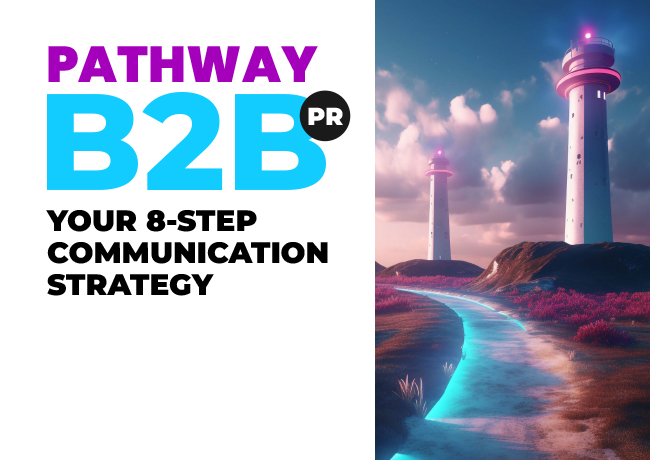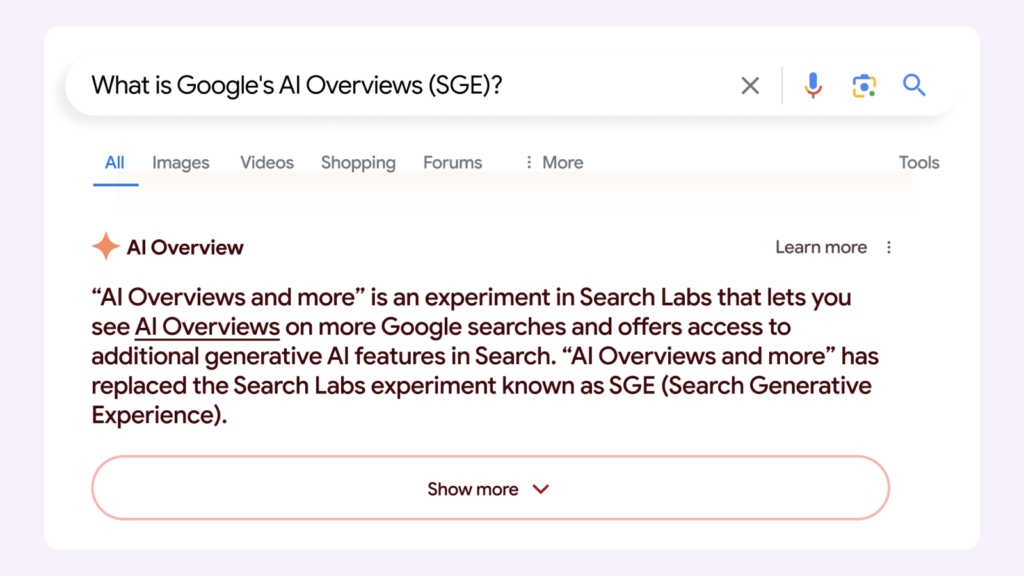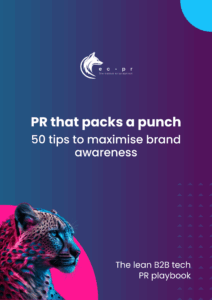
How to use AI in PR in 2024
How to use AI in public relations effectively (without damaging your reputation, or putting off journalists).
Key takeaways
- There are incredible strengths and pitfalls in using AI tools in PR.
- PRs need to embrace the efficiencies of artificial intelligence to keep pace with competitors.
- However, AI tools cannot replicate the differentiating value of unique human insight and experience. Large Language Models (LLM) are not really intelligent and cannot understand clients, journalists or the general public in a person-to-person relational way.
- We report that journalists actually feel insulted by AI pitches.
- AI can compound careless or weak thinking published by unknown people on the web.
- Therefore do use AI tools to generate first drafts but always, always fact check and source and reference everything independently.
- Also use AI tools to create profiles that reflect brands, tone of voice etc. in your drafts.
- Thought leadership, whitepapers, high-level thinking and personal comms should not be attempted with AI tools.
- How we use AI in PR in the future will change considering how we want to share our intellectual property and the implications of copyright violation lawsuits.
Why we need to embrace AI tools in public relations
AI is a brilliant tool for driving efficiencies and generating comms and content at pace for time and cash-strapped PR teams. But it has limitations which you need to understand to avoid wasting your efforts and damaging your reputation altogether.
If you want to use AI in PR – in your comms, content, and campaigns – you need to understand its pros and cons and where it should fit in your overall approach to communicating with your audiences.
Over the last 18 months, AI has proliferated and moved from fun and quirky to a real contender in the suite of tools to improve efficiencies. ChatGPT, Bing, Notion AI, Jasper and Rytr, amongst others, offer to create long and short-form text in response to simple prompts. Logically, this has started to pose the question of how this impacts those industries for which the written word is a cornerstone, such as PR.
What AI in PR can achieve
AI impacts everything. With the right prompts, AI can produce anything: a business strategy, an organisational plan, a redundancy notice, governance policies, a crisis plan, job descriptions, HR policies, recruitment ads, a sales plan, a sales script, a marketing framework, a marketing content plan, a sales brochure, video and audio script, speech script, and yes, press announcements.
So, we’re all out of a job then!
But it’s not quite that simple. For many of us who have dabbled in AI, or even use AI regularly, we are still far from being AI experts and AI certainly isn’t an expert! AI is a relatively new tool and has well-documented problems with ‘hallucinations’ and producing erroneous information.
Yet, when we moved from travelling on horseback to travelling by motor car; we didn’t stop travelling. We travelled more and further and had more adventures, and then the advent of budget air travel fuelled the spirit of adventures, and we travelled further still and more exotically.
AI will help us, as communication professionals, to travel further and to have more exotic experiences. It’s certainly not something we should be afraid of.
Why a Large Language Model cannot replicate insight, experience, and expertise
As PR and communication professionals know, PR is not just about writing, you can spend an inordinate amount of time researching a subject matter, and watching or listening to experts before your fingers start to touch the keyboard.
In comparison the AI tools we know today work using a Large Language Model (LLM). AI looks for patterns in words and can create versions of what it might expect, based on what is has already consumed. It doesn’t really understand anything in the true sense.
Therefore, as with everything in life, the output from an AI tool will reflect the quality of the input.
Cr*p in: Cr*p out vs Intelligence in: Intelligence out
This works in two ways. Firstly, what has the LLM been trained on? You can be sure it was not all high quality content.
Secondly, note, the critical nature of the prompts you enter to generate a first draft. If the prompts are inaccurate or incomplete, your output will mirror and potentially amplify your vacuums. I believe that AI can be used effectively for producing first drafts of many pieces of written communication or scripts. I also believe that a human review is essential to ensure that the peculiarities, such as gender data biases, ingrained in the technology are redressed.
Insight, experience, and expertise serve to personalise content to make it compelling and unique in a way that a machine tool simply cannot yet achieve.
How AI can help with tone, language and style
The hook, message and tone must work in harmony to attract and engage the intended audience. AI solves this particular problem; you can create a profile for your author and describe in detail your intended audience including age, experience, interest, aspirations, desires, and key messaging. You can also include the corporate values, tone, and any style guidance you want to be reflected in the output and then let AI do the rest.
There has never been any good reason for great writing or fabulous compelling comms not to be the norm – however over-stretched resources often deprioritise high-quality written and verbal output – which seems odd considering how these directly impact brand perception, awareness, and desire.
AI will not change this. If anything, AI will compound and amplify weak and careless thinking. This will serve to highlight more clearly those who respect their audience and value their brand perception over those who don’t.
Never forget that AI is far from being an expert in anything right now, it is a tool for you to wield – which is why subject matter experts always need to fact-check the outputs and ensure they’re confident in the content.
How do journalists feel about receiving AI-generated pitches?
We asked them. We surveyed our pool of journalist contacts and asked if they were aware of AI-generated pitches and content, and how they would feel about receiving them. This is what they said…
“It’s flat & dull – instant coffee vs real coffee”
“It lacks personality, context and insight”
“ChatGPT certainly has its own ‘tone of voice’ which is hard to describe but easy to pick up on. There tends to be some repetition and use of certain phrases or words.”
“On principle, I would not take any further action on any AI-generated press release. It would be ignored.”
We asked them how it made them feel, and they responded:
“The same as when I get a sloppy press release – I roll my eyes.”
“It feels insulting. I am taking the time and effort to craft a well-written article. I would expect a PR agency or media relations colleague to make the same efforts.
What impact does receiving this type of content have on your relationship with the PR agency or the brand itself, if any?
“I would immediately terminate my work with any agency or colleague if I discovered they were producing AI-based press releases or content.”
“My main concern with AI-generated PR is that it will lead to even more inbox spam than I currently get.”
Big Brother is watching you and learning from you.
Every time you interact with an AI tool it takes your information and adds it to the universal memory to serve up later as a cold soup for someone else to heat up! If you genuinely want to share knowledge and understanding, to educate, influence and persuade your audience, then you have a responsibility and a duty of care, to distribute high-quality accurate comms – not just inane, beige, truisms.
And, don’t forget – AI can go seriously wrong as this brilliant and oh-so-funny (as long as it isn’t my brand) article from Tech.co reveals in this piece on AI failures and mistakes. My current favourite is the sweary DPD Chatbot.
So where is it ok to use AI-generated text?
I believe that you can use human-prompted, AI-generated, and human-reviewed text where a unique, expert perspective is not expected. SEO blogs can be well written by tech because they are designed to be read by tech – however, be careful to tailor your output because if your competitor is also using the same tools, you will soon become the same shade of indistinguishable grey.
Creating content for websites, and blogs, writing podcast script outlines, and the framework for insights/white papers can be achieved using AI. Thought leadership cannot. Ever. If you are to protect your credibility and authority, you cannot use AI to generate text, and then claim for it to be your own thought leadership. It is simply dishonest.
Thought leadership should be provocative. It should inspire and generate debate. It is rooted in real-world experience, practised expertise, and amplified by hard evidence and sometimes hearsay. Done well, it ignites emotions and accelerates change.
| AI Generator Suitability Checklist | |
| Content type | 1st iteration* |
| SEO blogs | 🟩 |
| Guest blogs | 🟩 |
| Press announcements | 🟩 |
| News releases | 🟧 |
| Comment pieces | 🟧 |
| Social posts | 🟧 |
| Social comments |
🟧
|
| Interview pitches & media relations | 🟥 |
| Thought leadership | 🟥 |
| Script outlines | 🟧 |
| White papers/Insights** | 🟥 |
| Sales leaflets | 🟩 |
| Service/Solution brochures | 🟩 |
| Website pages | 🟩 |
|
*We assume that the first iteration is off a fully formed profile prompt created by a human and will then be edited by a human. **We acknowledge that for longer-form content, such as a white paper, a framework may accelerate production with the use of an appropriately detailed prompt. |
|
What is the future for AI in PR?
I believe that AI generators and AI detectors will come as part of Google or Microsoft’s suite of products. In the US Google has already released AI Overviews or Search Generative Experience (SGE) as a kind of extended ‘featured snippet’ that references the websites which ‘corroborate’ the AI-text in a carousel below the overview.
Furthermore, people will find results from their searches from a wider array of tools such as ChatGPT or Perplexity.ai not just from Bing or Google. Meta has revealed its search function on Facebook and Instagram is powered by AI.
Consequently, we have the choice of either making our owned media output friendly for generative search, not just ‘traditional SEO’. Or choose to opt-out of letting LLMs scrape owned media altogether so that our intellectual property cannot become pulp for Big Tech AI tools.
I also predict we will see search engines indicating the % of AI-generated content in each article they serve up in a search; to help us evaluate whether to investigate further. There is already an option on Google to search for content without AI Overviews by selecting Web results only in the dropdown filter options.
AI in PR & Marketing Comms… The future is human?
Given that they are well-written, it is entirely possible that original texts and scripts created without AI may be regarded as superior and held in higher esteem – with all the kudos that this implies spilling over onto the brand.
Remember, PR is not just about writing, nor is it just about building relationships with journalists, aka media relations – these comprise the delivery phase of the reputation management process. Communication Strategy and PR Activation come before PR Delivery. These three phases ensure we are saying the right things to the right people in the right channels and that all communications are tailored to the audiences of those specific channels to achieve the desired outcome.
AI will help us trial and test at pace, but it is unlikely to help us engage with grace and empathy.
Again, I’ll add ‘yet’ because who knows where this bullet train is headed.
And finally, who owns the Copyright on the text you create?
OpenAI (the company behind ChatGPT) does not claim ownership of generated content. According to their terms of service, “OpenAI hereby assigns to you all its right, title and interest in and to Output.” However, you need to check in with your provider to make sure that you own what you draft via their app.
It is worth noting the legal cases underway. Recently we learned that The New York Times is suing OpenAI /Microsoft over violation of copyright, and then others like The Atlantic have struck a deal to allow OpenAI to train on its original journalism.
For corporate marketing communications and for individuals, the implications are huge either way: we have to decide whether we want our content scraped to train generative AIs. Let’s consider our thought leadership, hard-won ideas and personal life on social media. Would we be happy if our content can be used without explicit consent to make money for the AI tech firms, or other companies who benefit from our ideas being fed into ChatGPT or Google Gemini? Or would it be a greater loss if our ideas are not available in this way?
What will be interesting is when an agency pitch scenario emerges with two or more PR agencies pitching the same ChatGPT4-generated idea!
It seems only right to leave the final word to the Pretender, so this final section was written by ChatGPT, unedited for your pleasure, after all, we expect the legal bits to be dull don’t we 😉:
“Copyright ownership of text generated by AI is a complex and evolving legal issue that varies depending on jurisdiction and specific circumstances. In many jurisdictions, copyright law typically grants ownership to the creator of the original work. However, when it comes to AI-generated content, determining the “creator” becomes more complicated.
“In some cases, the copyright may be attributed to the person or organisation that trained or programmed the AI system, as they can be considered the creator or author of the system itself. In other instances, if the AI is simply a tool used by a human author to assist in the creation process, the human author may still be considered the copyright owner.
“However, there is an ongoing debate and legal ambiguity surrounding AI-generated content and copyright ownership. Some argue that since AI systems are capable of generating original content without direct human intervention, they should be recognised as autonomous creators and thus entitled to copyright protection themselves.
“As of now, legal frameworks and precedents regarding copyright ownership of AI-generated content are still evolving and vary greatly between different jurisdictions. It’s advisable for individuals and organizations involved in the creation or use of AI-generated content to seek legal counsel to navigate these complexities and ensure proper attribution and protection of intellectual property rights.”

Your 8-Step Communication Strategy Guide
A comprehensive guide to delivering your business goals using intelligent and relevant messaging.



